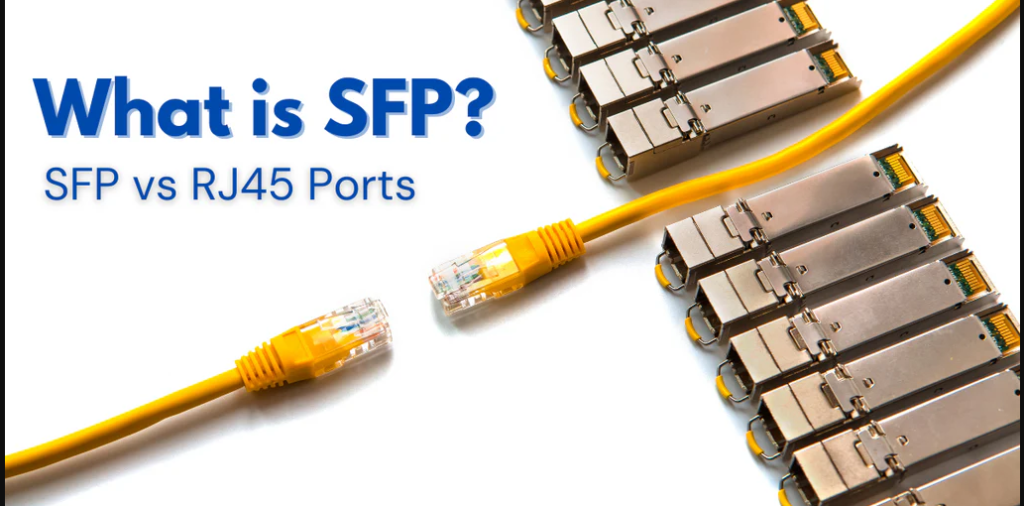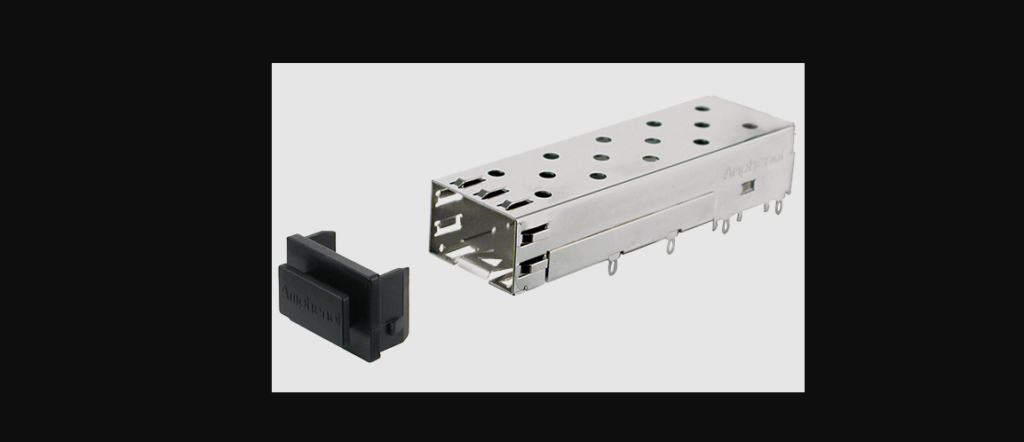Introduction In our increasingly digital world, having a reliable and adaptable network is crucial. One key technology that ensures efficient data transmission is the Small Form Factor Pluggable (SFP) port. This article breaks down what an SFP port is, why it matters, and how it fits into the services offered by eTAZ Systems.
What is an SFP Port?
An SFP (Small Form Factor Pluggable) port is a special type of connection on network devices like switches and routers. It allows these devices to communicate over both optical (fiber optic) and copper (Ethernet) connections. One of the standout features of an SFP port is that it’s hot-swappable, meaning you can plug or unplug it without turning off the device. This flexibility is why SFP ports are so widely used in modern networking setups.
SFP ports work with small, modular devices called SFP modules. These modules enable network devices to connect to different types of cables, whether it’s single-mode or multi-mode fiber optics or even copper cables. Because of this modularity, network administrators can easily upgrade or adjust their networks without needing to replace whole devices.
How SFP Ports Operate?
SFP ports provide a standardized interface for connecting transceiver modules. These transceivers take electrical signals from a network device and convert them into optical signals (or the other way around) for transmission over fiber optic cables. Depending on the SFP module used, these ports can support various data speeds, usually ranging from 100 Mbps to 10 Gbps.
At eTAZ Systems, we understand the critical role of fast data transmission in modern networks. That’s why we incorporate SFP technology into our solutions, ensuring our clients have high-speed, reliable, and scalable network infrastructures.
Types of SFP Modules There are several types of SFP modules, each designed for specific networking needs:
1000BASE-SX: Ideal for short distances, typically up to 550 meters over multi-mode fiber.
1000BASE-LX: Suitable for longer distances, up to 10 kilometers over single-mode fiber.
1000BASE-T: Used with standard copper cabling, up to 100 meters.
10GBASE-SR: Supports 10 Gbps data rates over short distances, up to 300 meters on multi-mode fiber.
10GBASE-LR: Suitable for long-distance communication, up to 10 kilometers over single-mode fiber.
Thanks to their versatility, SFP modules are a go-to choice for network administrators who need to adjust to varying network environments. eTAZ Systems offers a wide selection of SFP modules to ensure compatibility with different network setups, giving our clients the flexibility to choose what best meets their needs.
Applications of SFP Ports SFP ports find use in many industries and settings:

Enterprise Networking: They connect switches, routers, and servers, enabling high-speed data transfer with flexible media options.
Data Centers: SFP ports are crucial for linking servers to storage devices and other network elements, supporting high data rates and long-distance communication.
Telecommunications: This industry relies on SFP ports to connect equipment across vast distances, especially with single-mode fiber optics.
Campus Networks: SFP ports help connect buildings and other facilities with fiber optic cables, supporting both short and long-distance communication.
At eTAZ Systems, we leverage the efficiency and adaptability of SFP ports to deliver top-notch performance in diverse networking environments.
Benefits of SFP Ports SFP ports offer several key advantages:
Flexibility: They allow for easy connections between different media types (copper and fiber optics) through interchangeable modules.
Scalability: As network needs grow, SFP ports make it simple to upgrade to faster connections by swapping out the module.
Hot-Swappability: You can add or remove SFP modules without shutting down your device, minimizing network downtime.
Cost-Effectiveness: By using SFP ports, organizations can avoid costly hardware replacements when upgrading their networks.
eTAZ Systems is dedicated to providing scalable, cost-effective networking solutions that incorporate SFP technology, ensuring our clients get the most value from their network investments.
SFP vs. SFP+ and Other Variants While SFP ports are common, other versions like SFP+ and QSFP offer different features:
SFP+: Supports higher data rates, up to 10 Gbps, and is backward compatible with standard SFP ports.
QSFP (Quad Small Form Factor Pluggable): Supports data rates up to 40 Gbps and can connect four SFP+ modules in one port, often used in high-performance environments.
QSFP+: An enhanced version of QSFP, supporting up to 100 Gbps, designed for ultra-fast connections.
Each variant is suited to specific networking needs. eTAZ Systems can help you choose the right type for your network, ensuring optimal performance and compatibility.
Implementing SFP Ports in Your Network When adding SFP ports to your network, consider:
Network Requirements: Understand your data rate, distance, and media needs to choose the right SFP module.
Compatibility: Ensure your devices support the SFP modules you plan to use.
Cost: Evaluate whether SFP (Small Form Factor Pluggable) technology offers a cost-effective solution for your needs.
Future Proofing: Plan for future upgrades and expansions when selecting SFP ports and modules.
With careful planning, you can build a network infrastructure that meets your current and future needs.
FAQs
What’s the difference between SFP and SFP+ ports?
SFP ports support data rates up to 1 Gbps, while SFP+ ports support rates up to 10 Gbps. SFP+ is backward compatible with SFP modules.
Can I use SFP modules with copper cables?
Yes, 1000BASE-T SFP modules are designed for Ethernet connections over standard copper cabling.
Are SFP ports compatible with all fiber optics?
SFP ports work with both single-mode and multi-mode fiber optics, depending on the module used.
Why are SFP ports beneficial in data centers?
They offer scalability, flexibility, and high-speed data transmission, making them ideal for data centers.
How do I choose the right SFP module?
Consider your data rate, distance, and media type requirements. eTAZ Systems can help guide your selection.
Can I mix SFP modules from different manufacturers?
While many are designed for cross-compatibility, it’s best to verify before mixing. eTAZ Systems can assist with compatibility checks.
Conclusion
SFP ports are a versatile and essential part of modern network infrastructure. They support various media types and data rates and offer the flexibility of hot-swappable modules. eTAZ Systems is committed to providing advanced networking solutions that incorporate SFP technology, helping our clients maintain efficient and scalable networks.
By understanding SFP ports’ capabilities and benefits, you can make informed decisions to enhance your network infrastructure.
